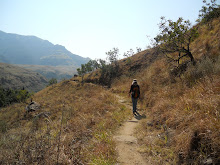At first, Byatt’s analogy doesn’t seem balanced, though. As forms of creativity, writing and painting share some characteristics, but not all. We can learn both from an early age. Adults and other children teach us to speak from the moment we use our voice. The teacher may give us brushes and paints on our first day of nursery school. In each process, interesting and unexpected things can happen, be they serendipitous or displeasing. Byatt’s artist uses oils or clay as his tools for producing an image; the writer uses language in the same way.
But we can’t say that in the situation of using language as we have learnt to use it and of using paint as we have learnt to use it, therefore paint = language, or language = paint. Language is a hinge. It joins painters and writers because it’s something they both use, in different contexts. Paint is a separate entity, unshared. While artists also speak, and can write if they choose, writers don’t (usually) paint.
So too Byatt’s medium that becomes second nature to the artist through experimentation is both not quite the same as, and similar to, the writer’s medium of language. The language that the writer chooses to write in is most likely their mother tongue. By the time they begin to write creatively, that language is already, in a way, second nature to them. They’re familiar with it. They’ve used it for years, in conveying meaning for practical purposes. Artists don’t usually paint for years for purposes other than producing fine art. In this sense, on starting to create, the writer has had more practice with language than an artist has had with paint.
But when writers do start writing – novels, poems, essays – they are using language for creative purposes. Then, experimentation helps to hone the writing, and it gradually becomes second nature to the writer. Here language is not only a hinge, it’s also a powerful tool, a producer of image, a way of representing in words what fine art represents in oil and clay. And so here language does = paint, and paint does = language.
The difference seems to lie in the nature of language and the way it’s used. Byatt’s analogy seems unbalanced from a literal point of view, from the view of a writer as a speaker. But it’s balanced from a metaphorical point of view, from the view of a speaker as a writer. Then the painter and the writer are both artists, wielding oils and words however they may desire.
But we can’t say that in the situation of using language as we have learnt to use it and of using paint as we have learnt to use it, therefore paint = language, or language = paint. Language is a hinge. It joins painters and writers because it’s something they both use, in different contexts. Paint is a separate entity, unshared. While artists also speak, and can write if they choose, writers don’t (usually) paint.
So too Byatt’s medium that becomes second nature to the artist through experimentation is both not quite the same as, and similar to, the writer’s medium of language. The language that the writer chooses to write in is most likely their mother tongue. By the time they begin to write creatively, that language is already, in a way, second nature to them. They’re familiar with it. They’ve used it for years, in conveying meaning for practical purposes. Artists don’t usually paint for years for purposes other than producing fine art. In this sense, on starting to create, the writer has had more practice with language than an artist has had with paint.
But when writers do start writing – novels, poems, essays – they are using language for creative purposes. Then, experimentation helps to hone the writing, and it gradually becomes second nature to the writer. Here language is not only a hinge, it’s also a powerful tool, a producer of image, a way of representing in words what fine art represents in oil and clay. And so here language does = paint, and paint does = language.
The difference seems to lie in the nature of language and the way it’s used. Byatt’s analogy seems unbalanced from a literal point of view, from the view of a writer as a speaker. But it’s balanced from a metaphorical point of view, from the view of a speaker as a writer. Then the painter and the writer are both artists, wielding oils and words however they may desire.


No comments:
Post a Comment